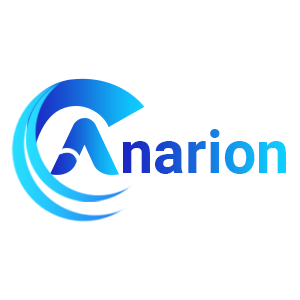Zend Framework VM by Anarion Technologies
Zend Framework is a comprehensive, open-source, object-oriented web application framework for PHP that enables developers to build robust, scalable, and high-performance web applications. It provides an extensive suite of components that can be used independently or together, allowing developers to create flexible and efficient applications suited to their specific needs. Zend Framework follows modern PHP practices, incorporating industry standards and conventions to ensure a consistent and maintainable development experience.
The framework offers a wide range of features, including but not limited to database abstraction, session management, form handling, input validation, and caching, making it easier for developers to implement common web application functionalities. One of its standout features is its modular architecture, which means developers can use only the components they need for a given project, optimizing both performance and resource consumption.
Zend Framework places a strong emphasis on security and performance, making it a reliable choice for building enterprise-grade applications that require high levels of reliability and scalability. It supports a variety of databases, including MySQL, PostgreSQL, and SQLite, and integrates easily with popular front-end frameworks and libraries. Additionally, Zend Framework is highly extensible, allowing for easy integration with other frameworks, third-party libraries, or custom-built solutions.
Zend Framework encourages best practices in software development, including the use of design patterns, object-oriented programming, and a clear separation of concerns between different application layers. It is well-documented and has an active community, providing ample resources for developers to learn and solve problems as they work. With its rich feature set, flexibility, and strong focus on security and performance, Zend Framework is a popular choice for developers looking to build sophisticated web applications, particularly in enterprise environments where scalability and maintainability are key concerns.
To subscribe to this product from Azure Marketplace and initiate an instance using the Azure compute service, follow these steps:
1. Navigate to Azure Marketplace and subscribe to the desired product.
2. Search for “virtual machines” and select “Virtual machines” under Services.
3. Click on “Add” in the Virtual machines page, which will lead you to the Create a virtual machine page.
4. In the Basics tab:
- Ensure the correct subscription is chosen under Project details.
- Opt for creating a new resource group by selecting “Create new resource group” and name it as “myResourceGroup.”
5. Under Instance details:
- Enter “myVM” as the Virtual machine name.
- Choose “East US” as the Region.
- Select “Ubuntu 18.04 LTS” as the Image.
- Leave other settings as default.
6. For Administrator account:
- Pick “SSH public key.”
- Provide your user name and paste your public key, ensuring no leading or trailing white spaces.
7. Under Inbound port rules > Public inbound ports:
- Choose “Allow selected ports.”
- Select “SSH (22)” and “HTTP (80)” from the drop-down.
8. Keep the remaining settings at their defaults and click on “Review + create” at the bottom of the page.
9. The “Create a virtual machine” page will display the details of the VM you’re about to create. Once ready, click on “Create.”
10. The deployment process will take a few minutes. Once it’s finished, proceed to the next section.
To connect to the virtual machine:
1. Access the overview page of your VM and click on “Connect.”
2. On the “Connect to virtual machine” page:
- Keep the default options for connecting via IP address over port 22.
- A connection command for logging in will be displayed. Click the button to copy the command. Here’s an example of what the SSH connection command looks like:
“`
ssh azureuser@10.111.12.123
“`
3. Using the same bash shell that you used to generate your SSH key pair, you can either reopen the Cloud Shell by selecting >_ again
or going to https://shell.azure.com/bash.
4. Paste the SSH connection command into the shell to initiate an SSH session.
Usage/Deployment Instructions
Anarion Technologies – Zend Framework
Note: Search product on Azure marketplace and click on “Get it now”
Click on Continue
Click on Create
Creating a Virtual Machine, enter or select appropriate values for zone, machine type, resource group and so on as per your choice.
After Process of Create Virtual Machine. You have got an Option Go to Resource Group
Click Go to Resource Group
Click on the Network Security Group: zendframework–nsg
Click on Inbound Security
Copy on the Public IP Address Rule
Click on Add
Add Port
Click on Add
Click on Refresh
Copy the Public IP Address ranges Section* (where default value is 8080)
8080
Select Protocol as TCP
Option Action is to be Allow
Click on Add
Click on Refresh
Copy the Public IP Address
SSH into your terminal and run following commands:
$ sudo su
$ apt update
$ cd /var/www/html/project
$ php -S 0.0.0.0:8080 -t public/ public/index.phpUse the browser, to access the application at
http://”instance IP Address:8080
or
http://”instance IP Address”/project/public/
Click on ZF Development Portal >>
ThankYou!!
All your queries are important to us. Please feel free to connect.
24X7 support provided for all the customers.
We are happy to help you.
Contact Number: +1 (415) 800-4585
Support E-mail: support@anariontech.com



